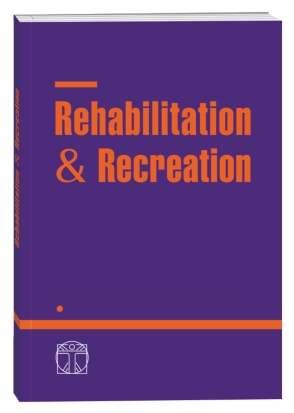EFFECTIVENESS OF THE APPLICATION OF KINESIOTAPING IN THE RECOVERY TREATMENT OF IDIOPATHIC SCOLIOSIS, DEGREE 1-2
DOI:
https://doi.org/10.32782/2522-1795.2022.13.10Keywords:
idiopathic scoliosis, kinesiotaping, restorative treatment, adolescents.Abstract
The prevalence of postural disorders and scoliosis in adolescents ranges from 5.0% to 46.9%. At the same time, idiopathic scoliosis (IS) accounts for approximately 80.0-85.0% of detected cases of scoliosis, and according to Cobb's statistics, the total number of cases with spinal deformity greater than 10° in the population is 1.5-3.0%. This pathology, due to its pronounced spread and rapid progression, is accompanied by the development of severe deformities, and damage to other organs and systems and accounts for 10-12% of the total structure of children's disabilities. Although the etiology of the disease is unknown, it is believed that the main pathogenic chain of the disease is an increase in the Cobb angle, formed by the expansion of the vertical line on the upper surface of the upper neutral vertebra and the vertebral center. body. Lower neutral vertebra. The characteristic abnormal curvature of the spine in the vertical plane due to lateral displacement and axial rotation of the vertebrae leads to cosmetic and medical disorders caused by pain syndromes, psychiatric disorders, and respiratory dysfunction. The greatest progression of scoliosis occurs during periods of rapid growth, espe-cially in adolescence. Late diagnosis of the deformity leads to the formation of a pronounced curvature of the spine, especially during the period of peak growth, which is evidenced by the significant relationship between the growth of the spine and the progression of its deformation. That is why the problems of early diagnosis of posture disorders, timely and symptomatic rational choice of methods of treatment of scoliosis, and monitoring of the dynamics of this orthopedic pathology are extremely relevant. A number of methods have been developed for the treatment of the early stages of scoliosis. However, almost all conservative methods of posture correction are associated with limitations of the patient's motor function, which can be especially painful in children. It is also important to note that rigid immobilization is often quite painful and can sometimes lead to deterioration of blood supply to the immobilized segment, and increased hypokinesia of the child, which leads to the formation of a "wrong cycle" of this etiological factor of the disease. It is precise because of this that the relevance of kinesiotaping (KT) is only gaining more publicity over time.
References
Nijs J, Mairesse O, Neu D, Leysen L, Danneels L, Cagnie B, et al. Sleep Disturbances in Chronic Pain: Neurobiology, Assessment, and Treatment in Physical Therapist Practice. Physical Therapy [Internet]. Oxford University Press (OUP); 2018 Feb 7;98(5):325–335.
Lima M, Ferreira AS, Reis FJJ, Paes V, Meziat-Filho N. Chronic low back pain and back muscle activity during functional tasks. Gait & Posture [Internet]. Elsevier BV; 2018 Mar;61: 250–6.
K ro lu F, olak TK, Polat MG. The effect of Kinesio® taping on pain, functionality,
Forozeshfard M, Bakhtiary AH, Aminianfar A, Sheikhian S, Akbarzadeh Z. Short term effects of kinesio taping on pain and functional disability in young females with menstrual low back pain: A randomised control trial study. Journal of Back and Musculoskeletal Rehabilitation [Internet]. IOS Press; 2018 Nov 21;29(4):709–15.
Tu SJ, Woledge RC, Morrissey D. Does “Kinesio tape” alter thoracolumbar fascia movement during lumbar flexion? An observational laboratory study. Journal of Bodywork and Movement Therapies [Internet]. Elsevier BV; 2017 Oct;20(4):898–905.
Chen S-M, Alexander R, Lo SK, Cook J. Effects of Functional Fascial Taping on pain and function in patients with non-specific low back pain: a pilot randomized controlled trial. Clinical Rehabilitation [Internet]. SAGE Publications; 2016 Apr 4;26(10):924–33
Downloads
Published
How to Cite
Issue
Section
License

This work is licensed under a Creative Commons Attribution-NonCommercial-NoDerivatives 4.0 International License.











